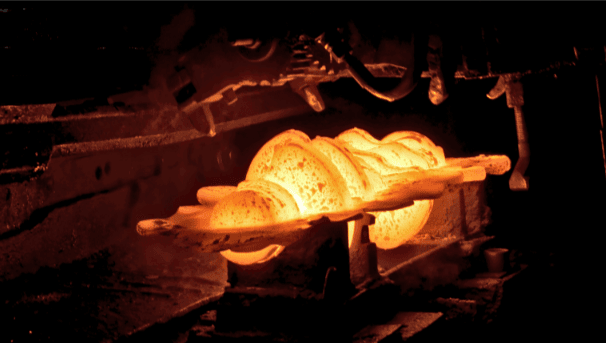Aluminum vs. Stainless Steel: Which Metal Suits Your Manufacturing Needs?
Aluminum and stainless steel shine as top picks in manufacturing, each flaunting unique perks—aluminum with its lightweight corrosion resistance1, stainless steel with rugged durability. Their electrical conductivity2, strength, and sleek finishes elevate designs, but picking the right one can feel like a high-stakes gamble. This article uses a Problem-Agitate-Solution lens to compare their cost, strength, conductivity, corrosion resistance, and malleability, spotlighting real-world applications to guide your choice in the "aluminum vs. stainless steel" showdown.

Problem: The Metal Selection Dilemma
Imagine you’re crafting an outdoor fixture. Aluminum’s light weight and rust resistance sound perfect, but will it hold up under stress? Stainless steel promises toughness, yet its heft and price tag loom large. The questions pile up:
- Cost vs. Weight: Aluminum costs more per pound, but what about per volume?
- Performance Trade-Offs: Strength or corrosion resistance—which trumps?
- Fit for Purpose: Where do these metals truly shine?
These uncertainties can stall your project—leaving you second-guessing at the drawing board.
Agitate: The High Cost of a Wrong Choice
Now picture the fallout of a bad call. Opt for aluminum, and your outdoor gear might buckle under load, cracking in a storm—cue skyrocketing repair bills and angry clients. Go with stainless steel, and you’re saddled with a heavy, overpriced unit that guzzles shipping costs and flops on conductivity, hobbling functionality. Worse yet, budget overruns and delays could tank your timeline. These aren’t just hiccups—they’re nightmares waiting to pounce if you don’t nail the metal pick. Isn’t it time to dodge that bullet?
Solution: Aluminum vs. Stainless Steel Unpacked
Cost: The Hidden Savings Game
By weight, aluminum outprices stainless steel, but don’t stop there. Stainless steel’s density (8 g/cm³) triples aluminum’s (2.81 g/cm³). For the same volume—say, a 1 cm³ part—aluminum’s lighter load slashes material use, making it cheaper overall. Budget-tight projects, like lightweight frames, cash in on this edge.

Strength: Lightweight Grit vs. Heavy Duty
Aluminum clocks in at 276 MPa tensile strength3, dwarfed by stainless steel’s 505 MPa, bolstered by alloys like chromium and nickel—think bridge beams that won’t budge. But aluminum’s extrusion process tweaks its strength-to-weight ratio, trimming fat where it’s not needed and beefing up key spots, a trick that powers aerospace panels. Stainless steel rules heavy machinery.
Conductivity: Power Flow or Insulation?
Aluminum conducts at ~37 MS/m, trouncing stainless steel’s measly 1.4 MS/m—its alloy mix kills conductivity. Need cables or electrical casings? Aluminum’s your go-to. Stainless steel? It’s the champ for insulation-heavy setups like chemical tanks.
Corrosion Resistance: Rust Busters Head-to-Head
Aluminum’s passivation layer fends off corrosion, especially in alloys like aluminum-magnesium—great for weathering the elements. Stainless steel, with 10%-20% chromium, boasts natural rust resistance, shining in wet climates (e.g., 304 grade). Aluminum’s lighter frame wins for outdoor roofing; stainless steel holds strong in harsh marine gear.
Malleability: Shaping the Future
Stainless steel bends better, thriving in cold or hot forming—like wire drawing for intricate parts. Aluminum, less malleable, excels in extrusion and stamping with lower energy, speeding up production for car shells.
Which Fits Your Needs?
- Aluminum: Lightweight (2.81 g/cm³), corrosion-resistant, conductive—perfect for outdoor and electrical jobs like solar mounts (30% weight cut).
- Stainless Steel: Strong (505 MPa), durable—built for load-bearing and tough settings like steel frames.
Prioritize rust-proofing over brute force? Aluminum’s your pick. Need unyielding strength? Stainless steel steps up.

Conclusion: From Doubt to Decision
Aluminum vs. stainless steel isn’t a coin toss anymore. Aluminum unlocks lightweight, rust-resistant, budget-friendly wins for outdoor and electrical designs; stainless steel delivers strength and staying power for heavy-duty challenges. The PAS lens—spotting the problem, feeling the stakes, and landing on solutions—hands you the playbook. Roof panels? Aluminum cuts the load. Bridge supports? Stainless steel stands firm. With these insights, you’re not just choosing—you’re commanding the outcome.
Key Specs Table
| Property | Aluminum | Stainless Steel |
|---|---|---|
| Density (g/cm³) | 2.81 | 8 |
| Tensile Strength (MPa) | 276 | 505 |
| Conductivity (MS/m) | 37 | 1.4 |
| Corrosion Resistance | High (passivation) | High (chromium) |
| Malleability | Moderate | High |
Understanding corrosion resistance can help you choose the right metal for your project, ensuring durability and longevity. ↩
Learning about conductivity can help you make informed decisions for electrical applications, ensuring optimal performance. ↩
Exploring tensile strength will guide you in selecting materials that meet your project’s strength requirements effectively. ↩



